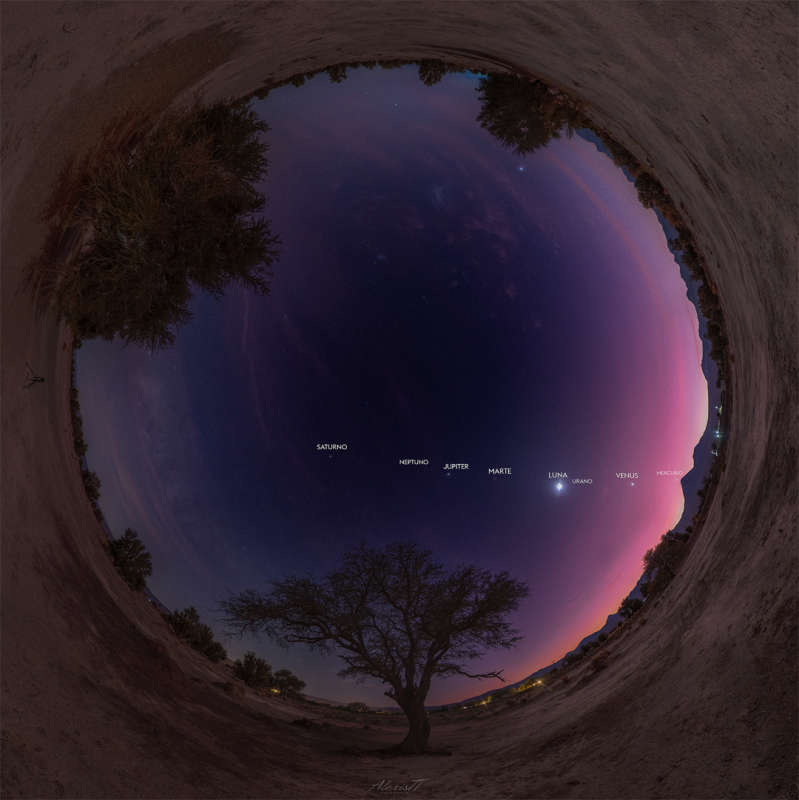Credit & Copyright: Alexis Trigo
Explanation:
Yes, but have you ever seen all of the planets at once?
A rare roll-call of planets has
been occurring in the morning sky for
much of June.
The featured fisheye all-sky image, taken a few mornings ago near the town of
San Pedro de Atacama in
Chile,
caught not only the entire planet parade, but the Moon between Mars and Venus.
In order, left to right along the
ecliptic plane,
members of this
Solar System family portrait are
Earth,
Saturn,
Neptune,
Jupiter,
Mars,
Uranus,
Venus,
Mercury, and
Earth.
To emphasize their locations, Neptune and Uranus have been artificially enhanced.
The volcano just below Mercury is
Licancabur.
In July, Mercury will move into the Sun's glare but
reappear a few days later on the evening side.
Then, in August,
Saturn will drift past the direction
opposite the Sun
and so become visible at dusk instead of dawn.
The next time that all eight planets will be
simultaneously visible in a morning sky will be in 2122.
Notable Submissions to APOD:
Morning Planet Parade 2022 June
1999 2000 2001 2002 2003 2004 2005 2006 2007 2008 2009 2010 2011 2012 2013 2014 2015 2016 2017 2018 2019 2020 2021 2022 2023 2024 2025 |
Yanvar' Fevral' Mart Aprel' Mai Iyun' Iyul' Avgust Sentyabr' Oktyabr' Noyabr' Dekabr' |
NASA Web Site Statements, Warnings, and Disclaimers
NASA Official: Jay Norris. Specific rights apply.
A service of: LHEA at NASA / GSFC
& Michigan Tech. U.
|
Publikacii s klyuchevymi slovami:
Solar System - planetary alignment - solnechnaya sistema - parad planet
Publikacii so slovami: Solar System - planetary alignment - solnechnaya sistema - parad planet | |
Sm. takzhe:
Vse publikacii na tu zhe temu >> | |
